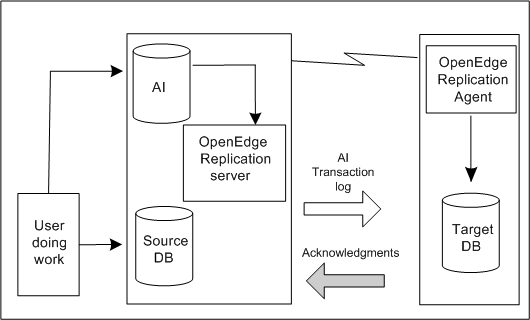In a synchronous configuration, the user modifies records and the transactions are committed. When the OpenEdge Replication agent encounters a transaction end, it sends an acknowledgment back to the OpenEdge Replication server. The committing user blocks (waits) until the transaction is fully applied to the target database. Other users are not blocked during this activity.
Use the synchronous configuration if you want a confirmation that the work you have done has completed before you go on to any other task. When comparing synchronous to asynchronous configurations, synchronous is safer; however, it is also a low-performance option. For more information about choosing asynchronous versus synchronous mode, see
Choosinga hot standby database.
The following figure shows synchronous operation in the OpenEdge Replication model for one target.
Because of the user blocks in the synchronous model, performance will be much slower than in the asynchronous model.
